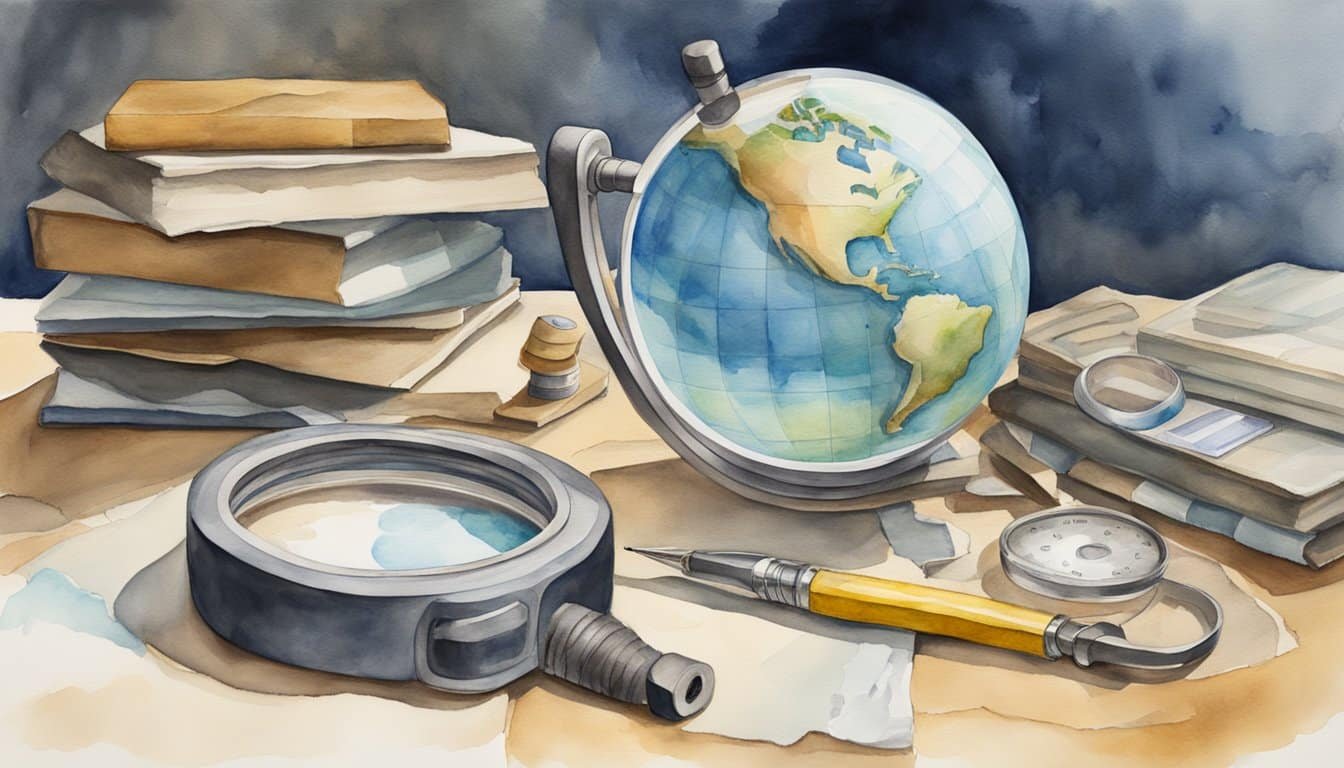Determining the Age of Earth
Determining Earth’s age is a fascinating journey through time, utilizing clues left behind in rocks, minerals, and even celestial bodies. This endeavor is not just about numbers; it’s a story woven into the very fabric of our planet.
Geological Methods
In their quest, geologists examine Earth’s layers, with stratigraphy offering insights into relative dating. By studying rock strata, they identify the oldest rocks and unravel Earth’s ancient past. For instance, zircon crystals are time capsules containing elemental clues that help determine the age of the surrounding rocks.
Radiometric Techniques
Arguably the most precise tool in the geologist’s arsenal is radiometric dating. Scientists harness the predictable decay rates of radioactive isotopes like uranium into lead to calculate the ages of rocks. This uranium-lead dating method has been instrumental in pinning down Earth’s age.
Analysis of Extraterrestrial Materials
Planetary history extends beyond our planet. Investigating meteorites, moon rocks, and even data from Mars has provided comparative data. The Canyon Diablo meteorite, for example, offers a reference point to approximate the formation of the solar system.
The Role of Plate Tectonics
Through plate tectonics, continents dance and oceans birth and disappear. The movement reshapes Earth and helps scientists understand geological time scales, including the formation of ancient supercontinents.
Historical Views on Earth’s Age
Historical figures like Aristotle and Nicolas Steno laid groundwork for understanding Earth’s age. Later, Lord Kelvin attempted, albeit inaccurately, to date Earth using thermodynamics; his efforts were contested by Biblical chronologies and eventually corrected by modern science.
Evolution of the Earth’s Surface
The planet’s surface is a chronicle of its history, with features like mountains, glaciers, and sediment layers adding to the story. Knowledge of these features allows geologists to reconstruct past environments, contributing to the narrative of Earth’s age.
Age Dating the Ocean Floor
Investigating the depth of the oceans and the age of the ocean floor through sediment cores and magnetic striping provides another piece in Earth’s complex temporal jigsaw puzzle, revealing patterns of oceanic expansion and contraction.
Life and Time
Fossils are Earth’s memory, capturing snapshots of life on Earth through the ages. Dating these ancient forms enables scientists to chart the evolution of life and correlate it with Earth’s age, opening windows to past ecological conditions.
Age of the Earth’s Core
Deep inside Earth lies the core, a testimony to the planetary differentiation over billions of years. The study of radioactivity and heat flows contributes to estimates of the core’s age, adding depth to our understanding of Earth’s formative processes.
Each of these methods offers a unique perspective on the planet’s biography, piecing together a tale that extends back over 4.5 billion years according to radiometric techniques and the analysis of extraterrestrial materials. From the ancient philosophers’ first musings to the high-precision tools of modern science, the quest to determine Earth’s age continues to evolve, encapsulating the dynamic history of the planet itself.
Earth’s Place in the Solar System

Understanding Earth’s age and position requires exploring how it formed, its relationship with the Sun, and its interactions with other cosmic bodies.
Planetary Formation Theories
The birth of Earth stems from theories of planetary formation that suggest it coalesced from a cloud of dust and gases in space. Elements combined and underwent accretion to form planetesimals—building blocks of planets. Differentiation during formation led to Earth developing distinct layers; the dense core, the mantel, and the crust known for its volcanic activity.
Comparative Planetology
By comparing Earth to other planets in the solar system, scientists can infer its history. Earth shares features with neighbors like Mars, which has polar ice caps and volcanoes, while our Moon influences Earth’s tides. They all float in the vast ocean of space, sharing the Sun as their central star.
Sun and Earth’s Relationship
The relationship between the Sun and Earth is fundamental. The Sun’s gravity keeps Earth in orbit, while its light and heat are vital for life. Interestingly, the age of the Sun is also a key factor in determining the age of our planet as both formed around the same time.
Impact of Cosmic Events
Cosmic events like impacts from comets, asteroids, and meteorites have left indelible marks on Earth’s surface. These events contribute not only to shaping the globe but also to bringing water and essential elements, integral to the development of Earth’s atmosphere and life as it’s known today.
Scientific Tools and Techniques

Determining the age of Earth is a complex process, reliant on cutting-edge scientific tools and precise techniques. By examining radioactive elements and leveraging technology, scientists unlock the history hidden within the planet’s layers.
Advancements in Radiometric Dating
Radiometric dating has long been a cornerstone method for estimating the age of various materials, including rocks and fossils. This technique hinges on understanding the decay of radioactive isotopes, such as uranium turning into lead or argon formed from the breakdown of potassium. The decay rates, characterized by a stable half-life, act as a natural clock. For example, the Uranium-Lead method has been refined over time to provide a more precise estimation of Earth’s age.
Role of Technology in Geology
Technology has revolutionized geology, enhancing methods like stratigraphy and the rock cycle analysis. High-resolution satellite imagery and advanced geological software help in the detailed study of various rock formations. The integration of such technologies facilitates a better understanding of rock layers and, consequently, the dating of rocks. For instance, technologies also assist in correlating rock layers across different areas, fleshing out the geological timeline of Earth.
Contributions of Space Exploration
Space exploration contributes significantly to earth dating techniques. Studying moon rocks and meteorites allows for cross-verification of dating techniques employed on Earth. These samples provide an external benchmark for Earth’s dating methods, whereby comparing the age of moon rocks and meteorites to Earth’s rocks affirms the reliability of the dating techniques used.
Mathematics in Earth Dating
Mathematics plays a crucial role in interpreting the data obtained through radiometric dating. Precise mathematical calculations are employed to determine the half-life of isotopes, deciphering the age of rocks and fossils by extrapolating the decay data. Knowledge of statistics and probability helps scientists estimate the accuracy of their findings and strengthens the reliability of our understanding of Earth’s age through radiometric dating.

